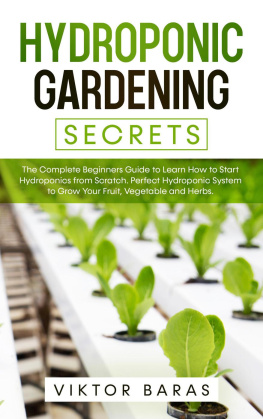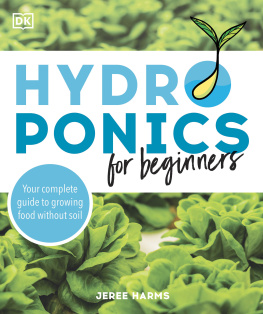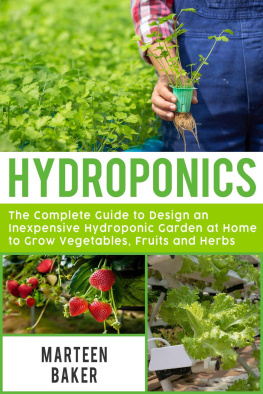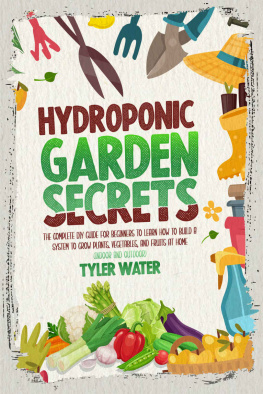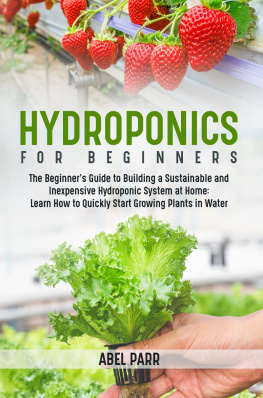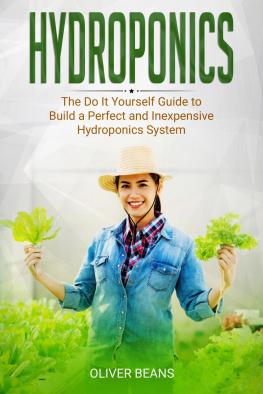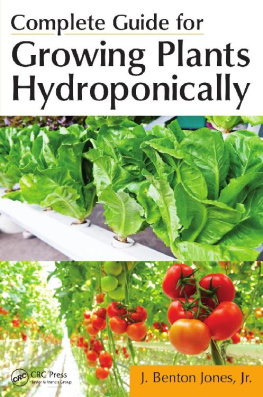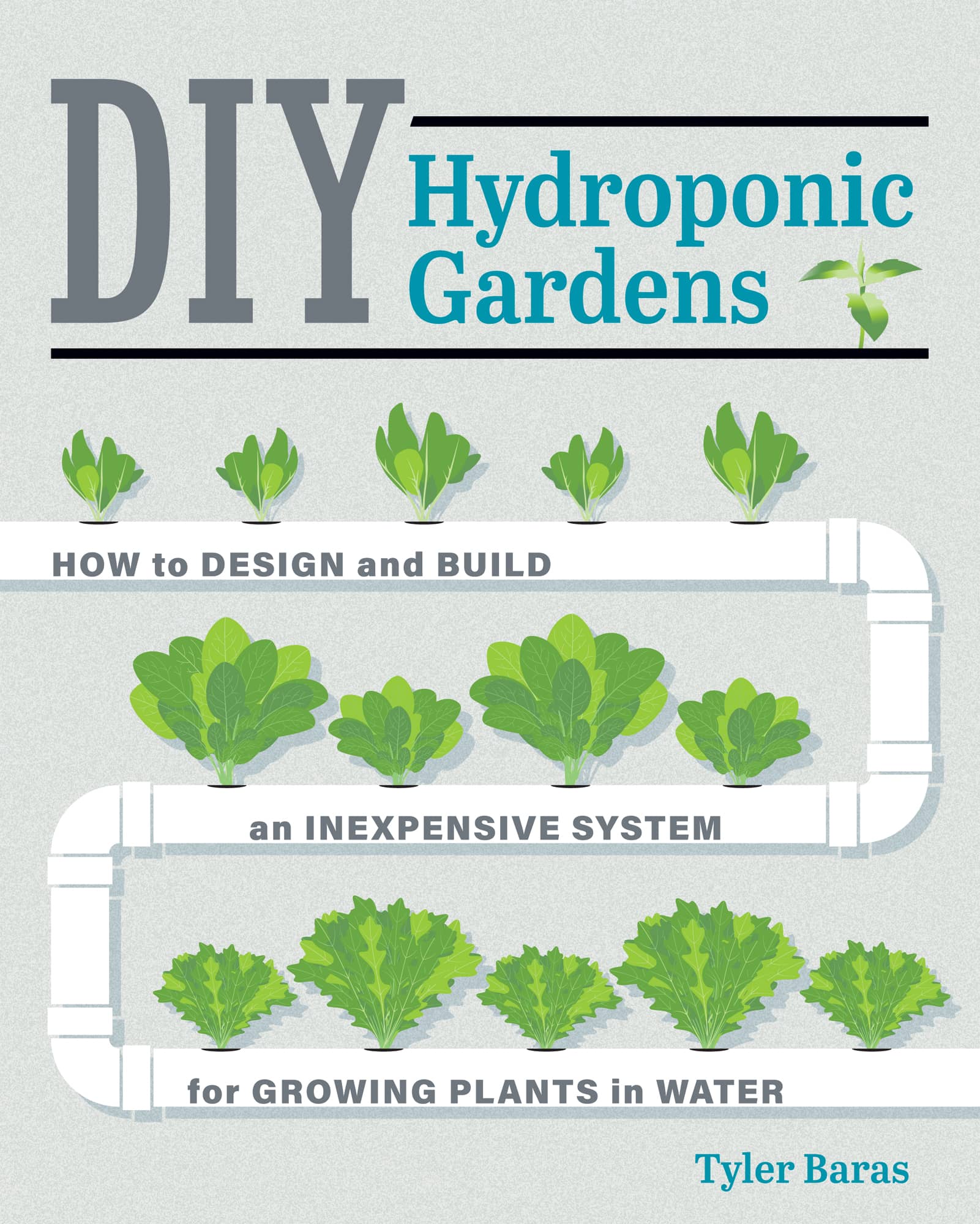Put simply, hydroponics is growing plants without soil. Most people assume that soil is indispensable for plant growth, but if you have this book, you probably already know that isn't so. The various functions of soil can be recreated using other materials. Soil provides support for the plant because it creates a physical structure for the roots to grasp. Tall trees would be unable to hold themselves upright on a windy day without a firm grip in the soil. In a hydroponic system, the physical support provided by soil can be replicated with a variety of materials and trellis structures.
Soil also provides essential nutrients for plant growth. These same nutrients can be supplied using alternative methods, however. Hydroponic systems dispense water-soluble nutrients derived from both organic and conventional sources. Soil can also provide a home for essential microbial populations that create beneficial relationships with plant roots. These same microbes can live and thrive in a hydroponic environment. So, if hydroponics is simply recreating the role of soil, why not just use soil?
ADVANTAGES OF HYDROPONIC GROWING
1 Doesn't require quality soil
Gardening is often thought of as an activity limited to those fortunate enough to have a lawn. Hydroponics greatly increases gardening options for those in homes without lawns or those with lawns that have soil poorly suited for edible crops. Hydroponics combined with indoor growing techniques gives gardeners even more options by expanding the potential garden space to nearly anywhere in the home.
2 Potential for faster crop growth
Plants rarely maximize their full growth potential in soil. There is almost always some limiting factor slowing down their growth. In soil, the plant roots need to search for nutrients that are often unevenly distributed and possibly inaccessible because they are bound to various soil particles. Some nutrients are inaccessible because the microbes in the soil have yet to break down the nutrient source (for example, manure) into a form that is available to the plant's roots. It is also possible for the plant growth to be constrained by a lack of water or too much water. Too much water can reduce the amount of oxygen available to the roots and inhibit biological processes necessary for the roots to uptake nutrients and water. Hydroponics bathes the roots in a precise blend of essential nutrients with a balance of water and oxygen. Many of the constraints on a plant's potential growth can be eliminated or reduced using hydroponics and indoor growing techniques.
3 Requires less space
A plant must spread its roots far and wide in the process of searching for water and nutrients. By eliminating the need for the plant roots to find water and nutrients, the spacing of plants is only limited by the area needed for the plant canopy.
4 Less constraint on growing season
Obviously, growing indoors permits gardeners to extend the growing season. Less obviously, hydroponics specifically can extend the growing season even when placed outdoors. Often the temperature of a plant's roots is more critical to its health than the leaf temperature. It is possible to grow winter crops in 100F if the root temperature is kept in an optimal range closer to 65 to 75F. It is also possible to grow crops that prefer warm temperatures in cold climates by increasing the root zone temperature. Hydroponics increases the ability to precisely adjust the root zone temperature. Through use of heaters, chillers, or simple practices like burying a hydroponic reservoir, a hydroponic gardener can increase or decrease water temperature and improve crop growth.
Can be used in any location Hydroponics allows gardeners to grow in areas that do not possess quality soil. Hydroponics also allows gardeners to grow in locations that would be unsuited for crops due to inhospitable climate or limited water access. One of the biggest opportunities for hydroponics is growing in deserts. Deserts often have a wonderful climate for growing crops, with lots of light and little pest presence, but they are limited in access to water. Hydroponics uses substantially less water than traditional methods and can make farming in deserts a viable option. Hydroponics is also the primary method used to grow plants in space. Many crops, including lettuce, have been grown in space using hydroponic methods.
Leafy vegetables can be grown hydroponically in outer space. Photo courtesy of NASA.
6 Uses less water
Hydroponics uses less water because you may reuse any irrigation water not directly taken up by the crop. In soil, much of the water is lost to evaporation and drainage. In hydroponics, evaporation can be reduced or eliminated by covering the water reservoir, and all drainage water is collected to be reused.
7 No weeding and no herbicides
No weeding. It may seem like a small point at first, but after a season of pulling garden weeds, most traditional soil gardeners would love to have spent that time doing something more fun, like preparing dishes from their harvest. Hydroponic growers also have no need to purchase herbicides. Furthermore, hydroponic growers never have to face the potential crop damage of herbicide drift when a breeze accidentally blows herbicide onto your garden and injures or kills your precious plants.
8 Can reduce or eliminate need for pesticides
Hydroponic gardens, especially those outdoors and in greenhouses, are rarely pest free, but hydroponics does have the potential to reduce pest pressure. Hydroponic gardens present fewer hiding places for pests that will burrow into soil or hide in decaying plant debris. When hydroponics is combined with indoor growing techniques it is possible to have a completely pest-free garden if the gardener practices preventive pest control techniques. Preventive pest control techniques are covered in the Equipment for Growing Indoors section of the Equipment chapter.


